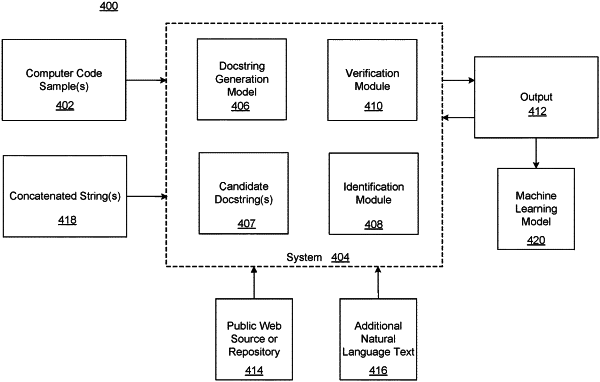| CPC G06F 8/30 (2013.01) [G06F 8/33 (2013.01); G06F 8/73 (2013.01)] | 19 Claims |

|
1. A computer-implemented method, comprising:
training a machine learning model to generate natural language docstrings from computer code;
receiving one or more computer code samples at the trained machine learning model;
generating, via the trained machine learning model and based on the received one or more computer code samples, one or more candidate natural language docstrings representing natural language text, each of the one or more candidate natural language docstrings being associated with at least a portion of the one or more computer code samples;
identifying at least one of the one or more candidate natural language docstrings that provides an intent of the at least a portion of the one or more computer code samples;
outputting from the trained machine learning model the at least one identified natural language docstring with the at least a portion of the one or more computer code samples; and
receiving, at the machine learning model, a selection of the one or more computer code samples, wherein the machine learning model provides an automatic description of the selection and generates a template for building an additional machine learning model.
|